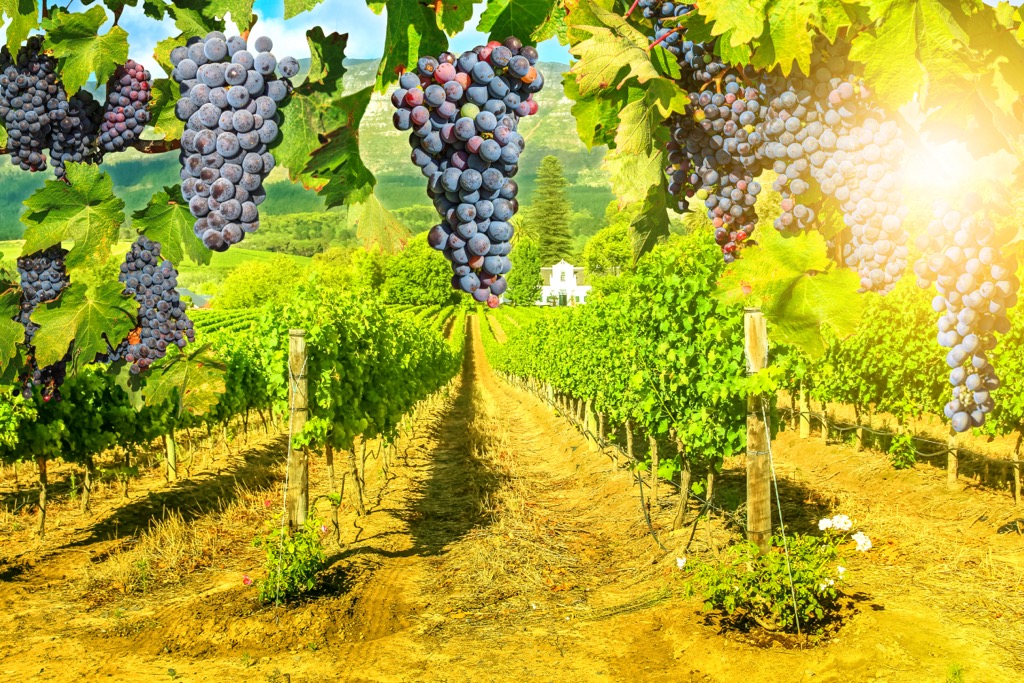Get PeakVisor App
Sign In
Search by GPS coordinates
- Latitude
- ° ' ''
- Longitude
- ° ' ''
- Units of Length

Yes
Cancel
Share ×

Scan the QR code and open PeakVisor on your phone
❤ Wishlist ×
Choose
Delete
The Cape Winelands is a picturesque and renowned wine-producing region in the southwestern part of South Africa. Consisting of 594 named mountains, the highest peak is Matroosberg, measuring 2,249 meters (7,379 ft). Dutoitspiek is the most prominent mountain at 1,995 meters (6,545 ft).
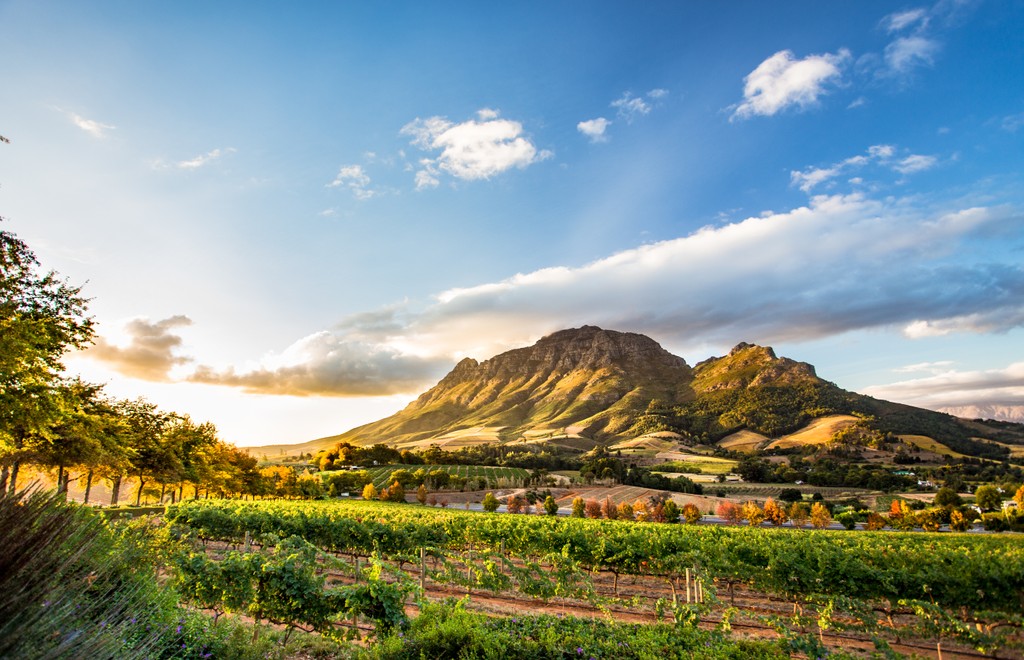
The Cape Winelands District Municipality is in the Western Cape and covers an expansive area of 2,230,900 ha (5,512,673 ac), equivalent to about 17% of the entire Western Cape.
The Cederberg Wilderness Area borders the region to the north, the Tankwa Karoo National Park to the northeast, the Langeberg Mountains to the east, and the City of Cape Town to the southwest, 170 km (106 mi) away.
South Africa’s largest wine-producing region is subdivided into six prominent districts, each with its own characteristics: Stellenbosch, Franschhoek, Paarl, Constantia, Robertson, and Wellington.
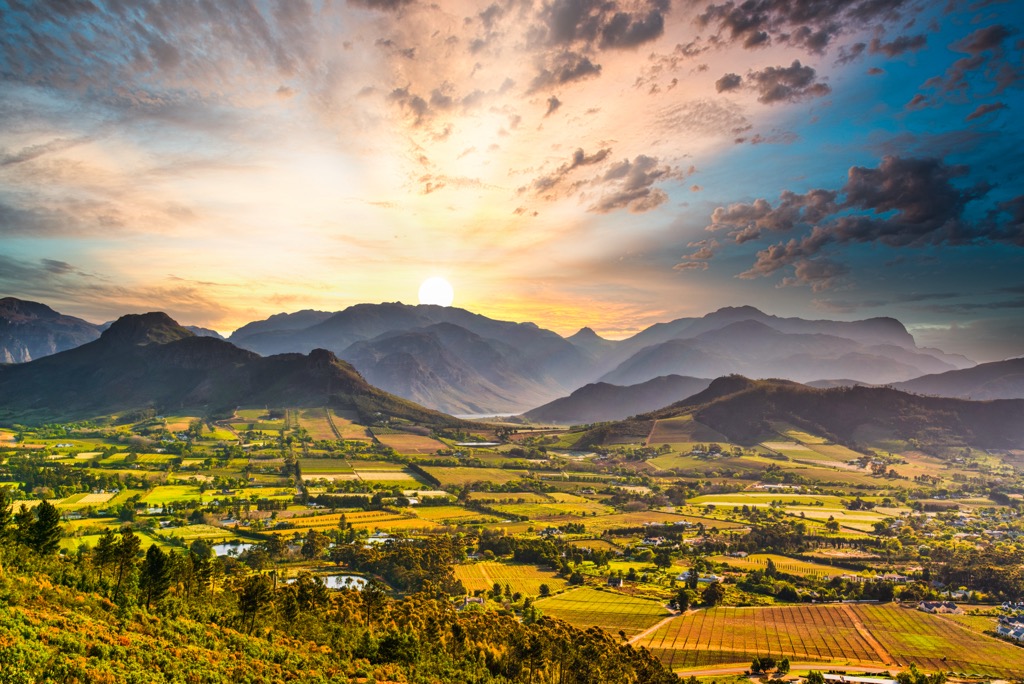
Stellenbosch is known for its rolling hills, diverse soils, and a wide range of grape varieties. The picturesque Franschhoek is nestled in a valley surrounded by mountains, renowned for its French Huguenot heritage and boutique wineries. In Paarl, a mix of flat plains and hills produces an extraordinary range of Shiraz and Chenin Blanc wines, and then there's Constantia, South Africa’s oldest wine region.
Well-known for its exceptional white wine varietals, including Sauvignon Blanc, Constantia is closer to the coast and benefits from a slightly cooler climate. Roberston is home to the world-renowned Roberston Winery, boasting a portfolio of red, white, and rose wines. Wellington is known for its variety of grape varietals, producing Pinotage, Shiraz, and another grape-based liquor, brandy.
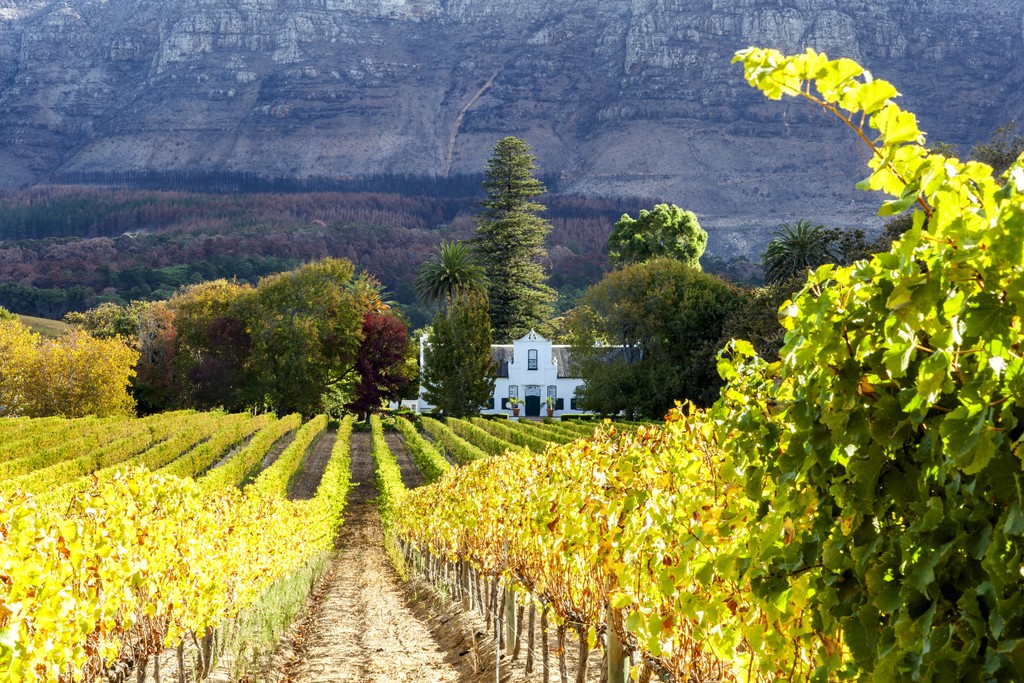
One of the defining features of the Cape Winelands District Municipality is its Mediterranean climate, characterized by warm, dry summers and cool, wet winters with snow on the peaks in August and September. The region benefits from the cooling influence of the nearby Atlantic Ocean and the warm, dry winds from the interior. This climate creates a perfect environment for grape growing, allowing for the development of rich and complex flavors.
The Cape Winelands District Municipality extends beyond just vineyards, boasting a diverse ecosystem. It is an essential component of the UNESCO-designated Cape Winelands Biosphere Reserve, encompassing various natural environments like fynbos, renosterveld, and succulent karoo vegetation.
Within this biosphere are several smaller protected areas, including Mont Rochelle Nature Reserve, Limietberg Nature Reserve, Jonkershoek Nature Reserve, Greater Simonsberg Conservancy, and Hottentots Holland Nature Reserve.
The Cape Winelands District mountains belong to the Cape Fold Mountains, a part of the greater Cape Fold Belt. The rocks in the Cape Fold Belt are predominantly sedimentary and vary in age from Precambrian to Cretaceous.
The primary rock types found in the region include sandstones, shales, and conglomerates. These rock formations have been extensively folded and faulted due to tectonic compression, resulting in the picturesque mountain ranges and valleys.
The geological diversity of the Cape Winelands District Municipality has led to a wide range of soil types, each contributing to the unique notes and characteristics of the wines produced in the region. Soils can vary from sandy loams to clay-rich.
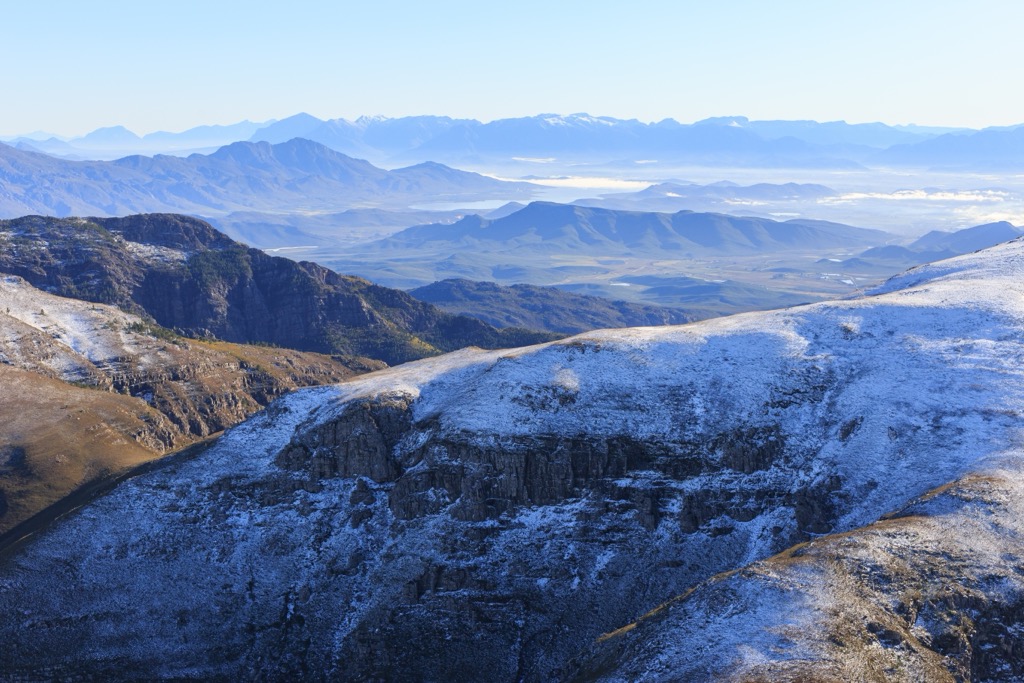
The Cape Winelands District Municipality is known for producing a variety of grape cultivars. The most famous varieties include Chenin Blanc, Sauvignon Blanc, Chardonnay, Cabernet Sauvignon, Merlot, Pinotage, and Shiraz, each thriving in specific microclimates and soil types. Additionally, the district municipality's Mediterranean climate supports fruit orchards.
Besides its primary wine production, the Cape Winelands District Municipality is home to many plant species, some of which are endemic. The Fynbos biome, a unique and highly diverse floral kingdom, dominates the landscape. Fynbos is renowned for its exceptional plant diversity, including proteas, ericas, and restios.
Common animals include various antelope species, such as the bontebok and springbok, as well as small mammals like mongoose and dassies. Birdlife is also abundant, with numerous species of raptors, waterfowl, and endemic birds.
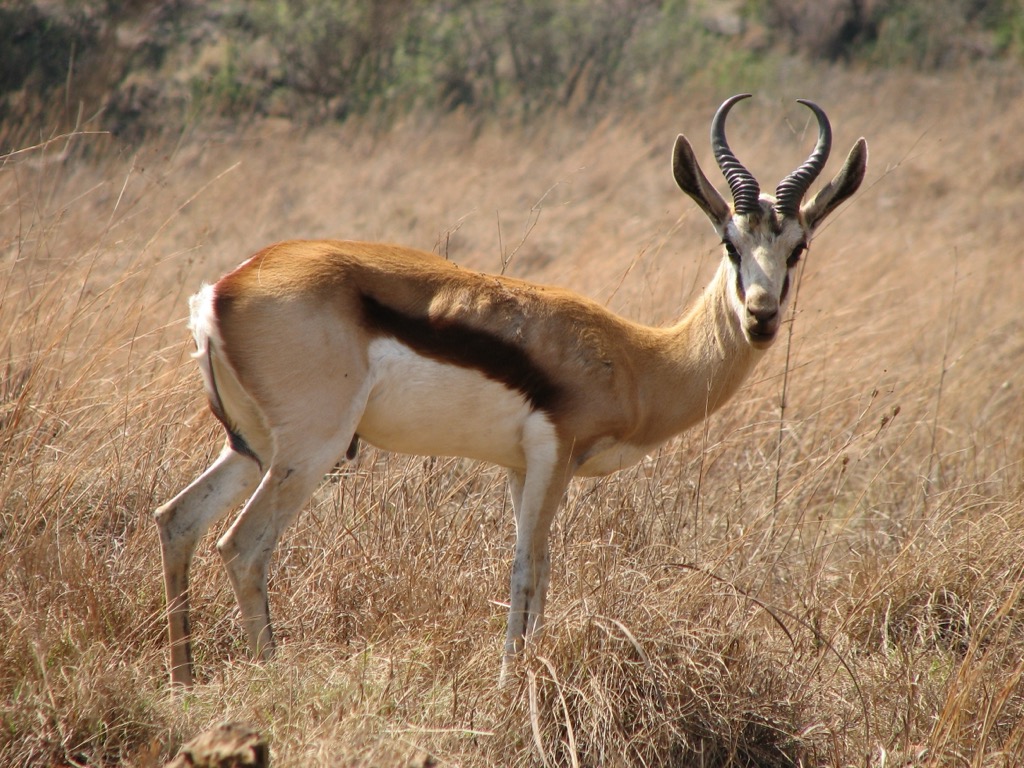
The region’s history begins with the indigenous peoples who have lived there for millions of years. Most of the history of humanity consists of the stories of prehistoric bushmen who evolved on this continent. However, the most recent indigenous peoples are the San and Khoikhoi, whose roots stretch back millennia.
These indigenous communities had a deep connection to the land, practiced nomadic lifestyles, and left behind rock art and other artifacts that serve as reminders of their presence.
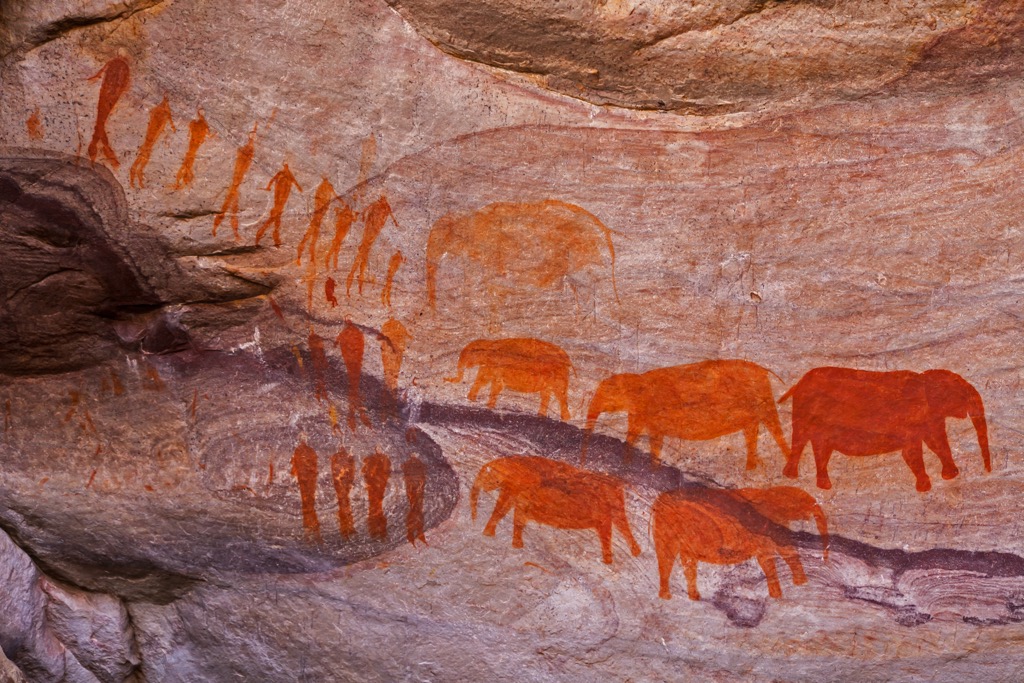
The modern history of the Cape Winelands District Municipality can be traced back to the 17th century when Dutch explorers arrived in the area. In 1652, Jan van Riebeeck established a Dutch settlement at the Cape of Good Hope, which marked the beginning of European colonization in this region. The early Dutch settlers quickly realized the area's suitability for wine production. This early recognition laid the groundwork for the region's future as a significant wine-producing area.
Over the years, the Cape Winelands saw waves of European settlers, including French Huguenots, who brought their winemaking expertise, enhancing the quality of wine production.
Today, the Cape Winelands District Municipality is a global wine-producing hub and a sought-after tourist destination with a rich cultural heritage that reflects the journey from indigenous inhabitants to the modern, inclusive wine industry that thrives in this picturesque corner of South Africa.
The Dutoitskop Hiking Trail starts at the Mont Rochelle Nature Reserve office on the iconic Franschhoek Pass. The moderate 12 km (7 mi) trail offers an accessible day adventure.
Hikers can expect to spend approximately 5 hours on this hike. Du Toitskop’s summit is 700 meters (2,297 ft) above the starting point. This trail is part of the UNESCO-declared Cape Winelands Biosphere Reserve, ensuring a pristine and ecologically significant environment. The trail's highlight lies in its panoramic vistas of the Franschhoek Valley and the majestic Wemmershoek Peak.
Nestled in the heart of the Mont Rochelle Nature Reserve near Franschhoek, the Cats Pass Trail is a must-visit for avid hikers seeking a physical challenge and natural beauty. This trail commences with a demanding 2.5 km (1.5 mi) uphill climb along the historic Cat's Pass in Mont Rochelle Nature Reserve, a historical route established in 1819.
The trail offers sweeping vistas of the pristine Fynbos reserve and the picturesque Franschhoek Valley. The Cats Pass Trail spans approximately 14 km (8.6 mi) and typically takes around 5 hours, making it an ideal day-trip adventure. However, due to its challenging terrain, this trail is best suited for experienced and fit hikers.
The Cats Pass Trail also offers a journey through history. Hikers can explore historical sites like the Jan Joubertgat Bridge, the oldest stone arch bridge in South Africa. Other prominent sites that add to the trail’s heritage include Cat's Toll House and the Old Outspan, once a resting place for oxen and travelers in bygone eras.

Located in the Limietberg Nature Reserve close to Paarl, the two-day-long Limietberg Hiking Trail showcases the splendor of the snow-covered Dutoitspiek and the surrounding landscape.
The trail covers a total distance of 36 km (22 mi) and is divided into two segments: 19 km (12 mi) on the first day and 17 km (10.5 mi) on the second. The journey commences with a demanding ascent up the historic Cat's Pass. Hikers then follow the ridge of the Dutoitspiek, treated to breathtaking vistas of the Fynbos reserve and the picturesque Franschhoek Valley. The path descends to an overnight cabin.
The second day of the Limietberg Hiking Trail continues along the slopes of the mountains and meandering river valleys, passing by significant historical sites such as ancient rock art, an abandoned manganese mine, and the graves of convicts who contributed to the construction of the Bainskloof Pass.
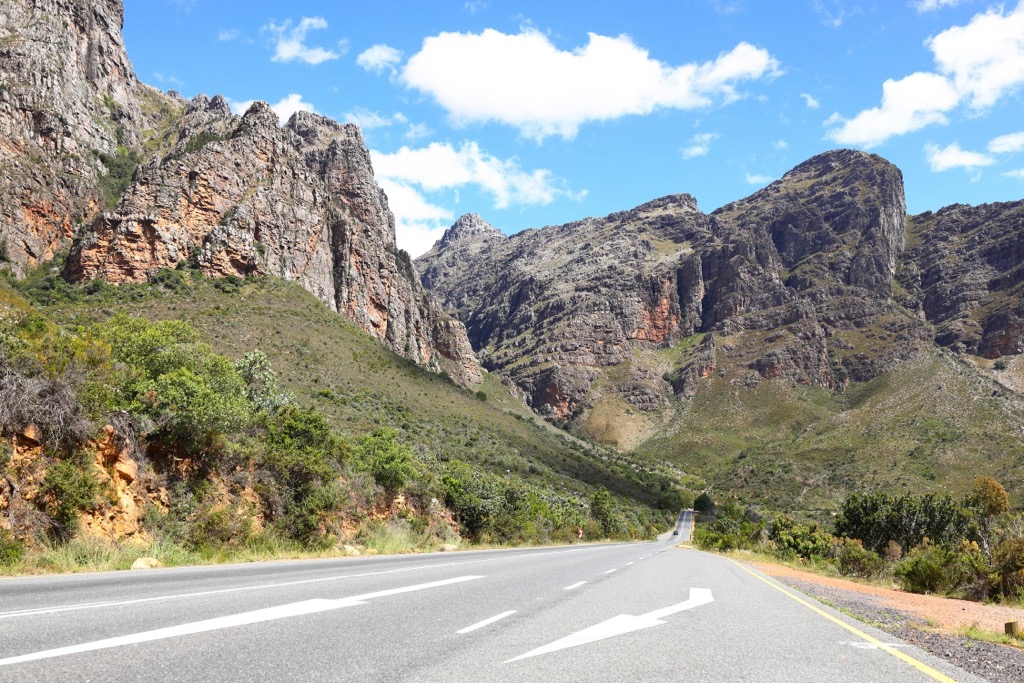
This moderate 6 km (4 mi) trail starts and concludes at the La Motte Tasting Room within the esteemed La Motte Wine Estate in Franschhoek.
Hikers are treated to vistas of the Franschhoek Valley as they traverse through La Motte's vineyards, a vibrant protea garden, a pristine fynbos reserve, and a segment of the mountain that graces the estate's backdrop.
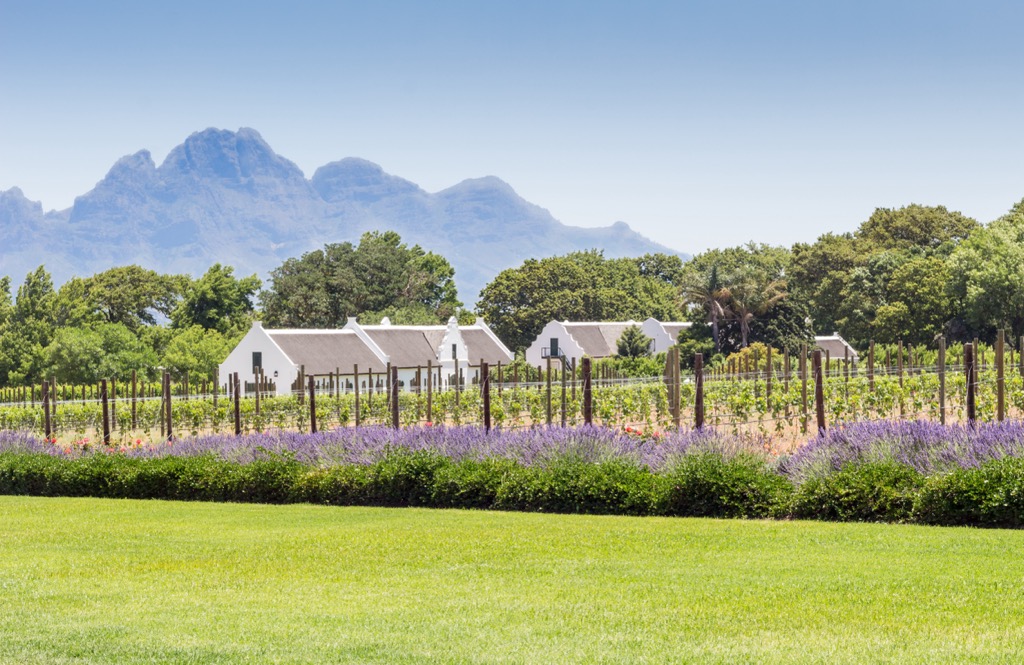
A monthly event from September to April, the Dirtopia Full Moon Hike transforms the Cape Winelands into a magical playground. Commencing from the Dirtopia Trail Centre in Stellenbosch, participants meander through verdant vineyards and the picturesque expanse of the Greater Simonsberg Conservancy.
Hikers traverse a Yellowwood forest and a Fynbos reserve before reaching the summit of Klapmutskop, with the iconic Table Mountain looming majestically in the distance. As the sun gracefully sets and the moon ascends, hikers can savor the starlit spectacle from the lookout point.
For a challenging trek that reaps incredible views over the verdant vineyards and valleys, embark on the 14 km (9 mi) Jonkershoeok Panorama Trail through the Jonkershoek Nature Reserve near Stellenbosh.
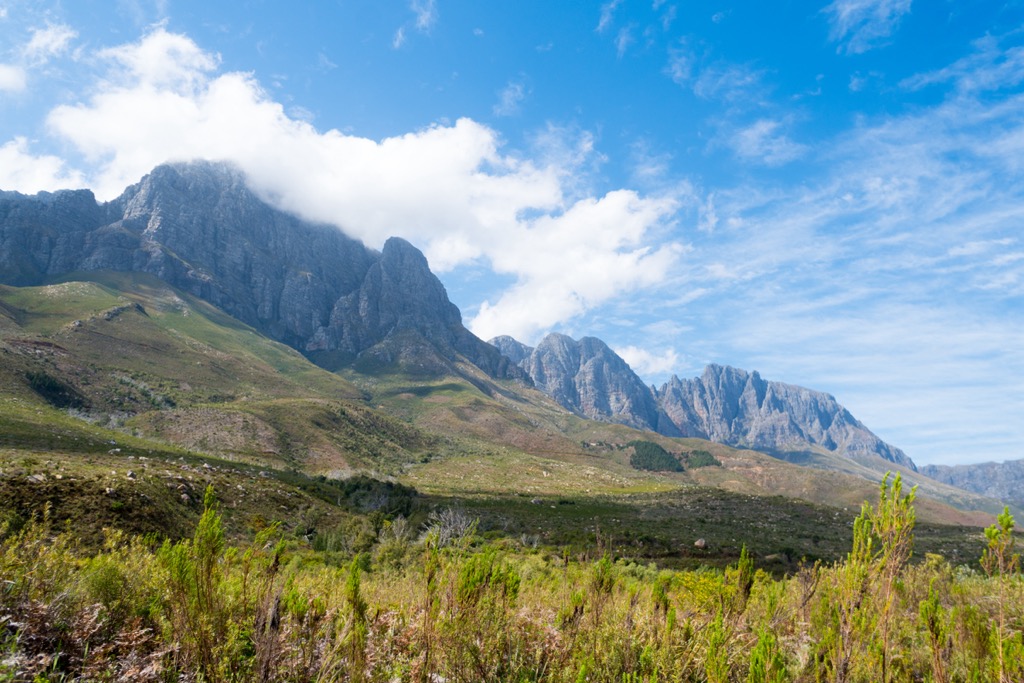
Beginning at the hairpin bend along the scenic circular drive through the valley, hikers follow the meandering path of the Eerste River before ascending steeply up Kurktrekkernek, a slope named after a corkscrew.
The trail offers views of the Franschhoek Valley, the Hottentots Holland Nature Reserve, and the majestic Banghoek Peak. However, the trail's crowning jewel is the magnificent Assegaaiboskloof Valley view from Bergriviernek, a scene that will undoubtedly enchant any observer. This trail, while rewarding, is best suited for fit and experienced hikers.
As one of South Africa's oldest towns, Stellenbosch boasts a unique blend of colonial heritage and modern sophistication. The town's historic core is characterized by well-preserved Cape Dutch architecture and oak-lined streets against the dramatic Cape Fold Mountains.
The heart of South Africa’s wine country, a visit to Stellenbosch wouldn't be complete without exploring its many vineyards and wineries. The region boasts some of the finest wine estates in the world, including Kanonkop, Delaire Graff Estate, and Spier Wine Farm.
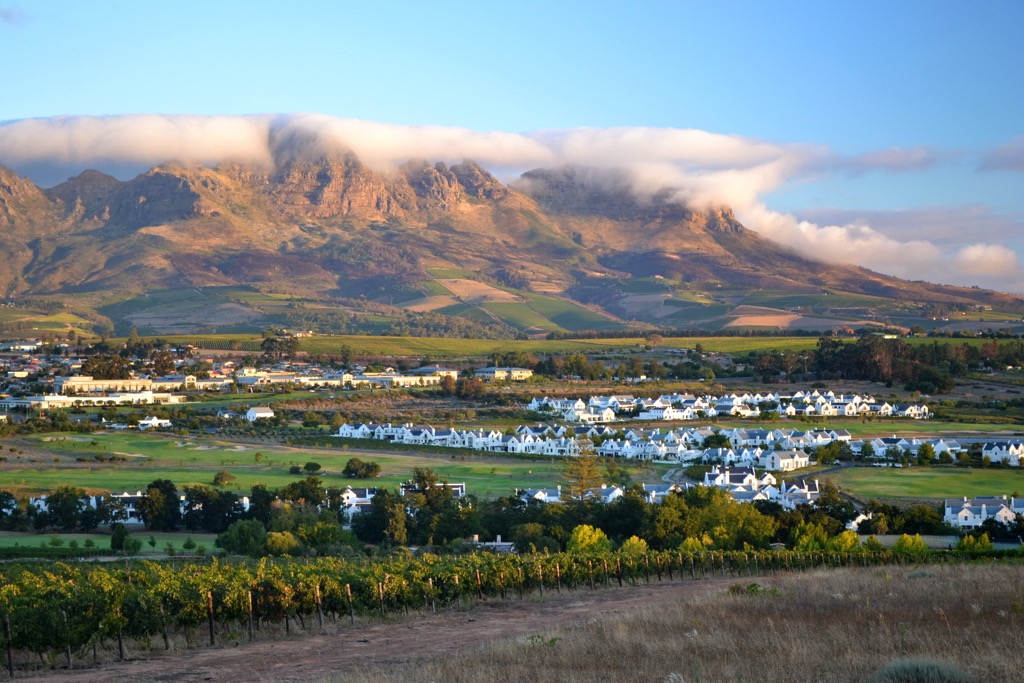
Stellenbosch isn't just about wine; it's also a hub for art and culture. The town hosts numerous art galleries and museums showcasing contemporary and traditional South African art. The Stellenbosch Village Museum offers a glimpse into the town's history, while the Rupert Museum features an impressive South African and international art collection.
The Jonkershoek Nature Reserve, located just outside town, is a haven for hikers and mountain bikers. Its rugged mountain terrain and pristine waterfalls make for a picturesque backdrop. The Helderberg Nature Reserve and Stellenbosch Botanical Gardens are worth exploring for those seeking tranquility and natural beauty.
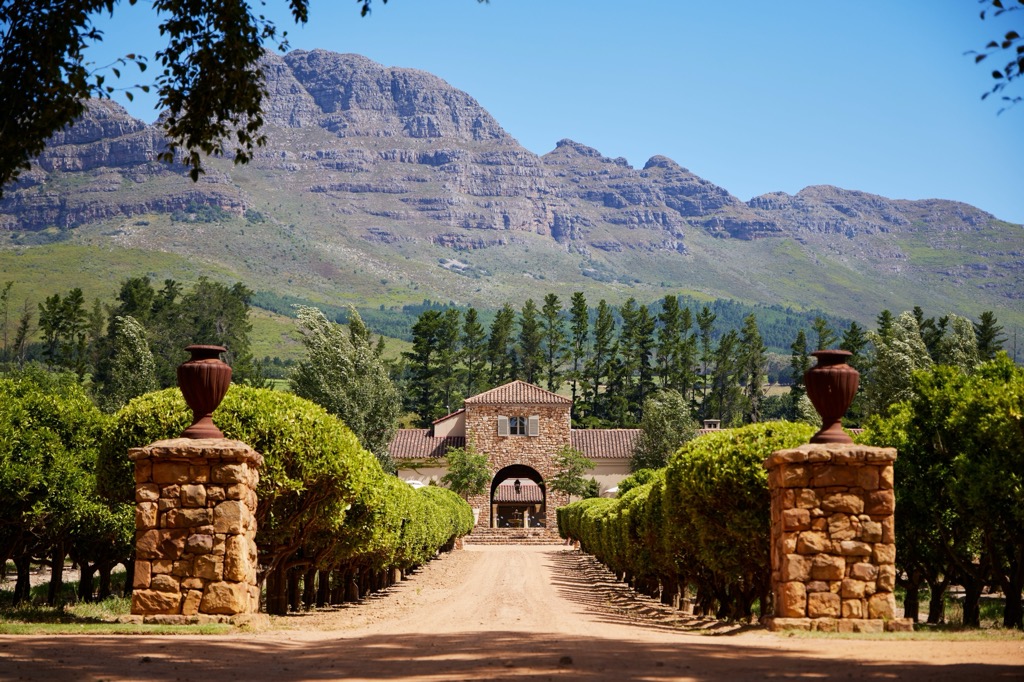
Known as French Corner due to its French Huguenot heritage, Franschhoek exudes an Old World charm, evident in its charming streets with antique shops, art galleries, and world-class restaurants. However, it’s the wine farms that truly beckon travelers to visit. A superb day trip from Cape Town, Franschhoek receives many visitors for its stunning landscapes, rich history, and many activities.
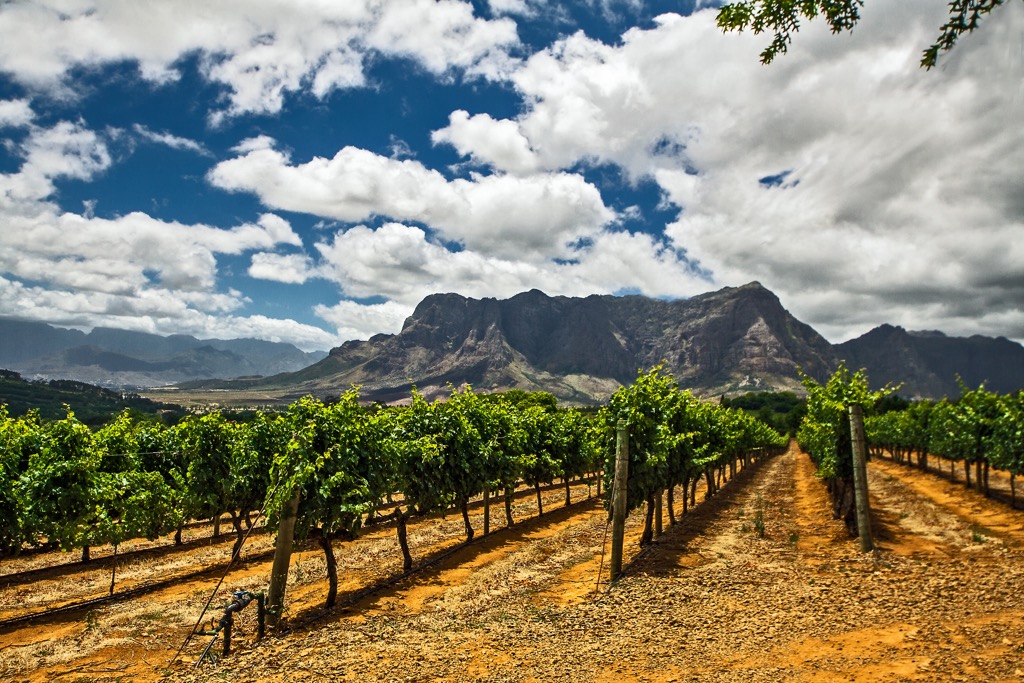
Franschhoek boasts more than 40 world-class wineries and vineyards. The town is renowned for producing some of the country's finest wines, particularly Chardonnay, Cabernet Sauvignon, and Shiraz. Visitors can embark on wine-tasting tours to sample exquisite wines while taking in breathtaking vineyard views. Be sure to visit iconic wineries like La Motte, Haute Cabrière, and Rupert & Rothschild Vignerons.
Beyond its wine prowess, Franschhoek is steeped in culture and art. The town is peppered with art galleries showcasing the works of local and international artists. Take advantage of the opportunity to visit the Franschhoek Motor Museum, which boasts an impressive collection of vintage cars. The Huguenot Memorial Museum offers insights into the town's history and the influence of the French Huguenots.

Throughout the year, Franschhoek hosts various festivals and events that draw visitors from near and far. The Franschhoek Bastille Festival in July celebrates the town's French heritage with wine tastings, street markets, and live entertainment. The Franschhoek Cap Classique & Champagne Festival in December is a sparkling wine lover's dream.
Explore Cape Winelands District Municipality with the PeakVisor 3D Map and identify its summits.



